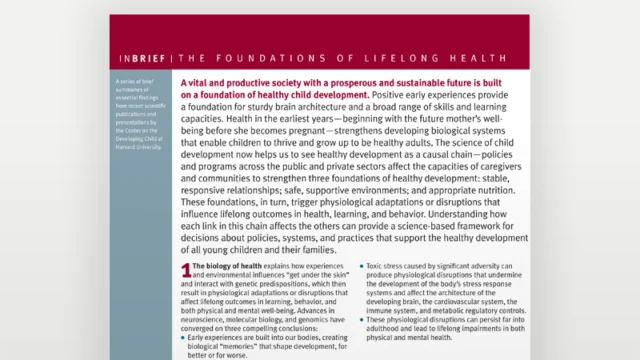InBrief: The Foundations of Lifelong Health

A vital and productive society with a prosperous and sustainable future is built on a foundation of healthy child development. Positive early experiences provide a foundation for sturdy brain architecture and a broad range of skills and learning capacities. Health in the earliest years—beginning with the future mother’s well-being before she becomes pregnant—strengthens developing biological systems that enable children to thrive and grow up to be healthy adults.
The science of child development now helps us to see healthy development as a causal chain—policies and programs across the public and private sectors affect the capacities of caregivers and communities to strengthen three foundations of healthy development: stable, responsive relationships; safe, supportive environments; and appropriate nutrition. These foundations, in turn, trigger physiological adaptations or disruptions that influence lifelong outcomes in health, learning, and behavior.
Understanding how each link in this chain affects the others can provide a science-based framework for decisions about policies, systems, and practices that support the healthy development of all young children and their families.